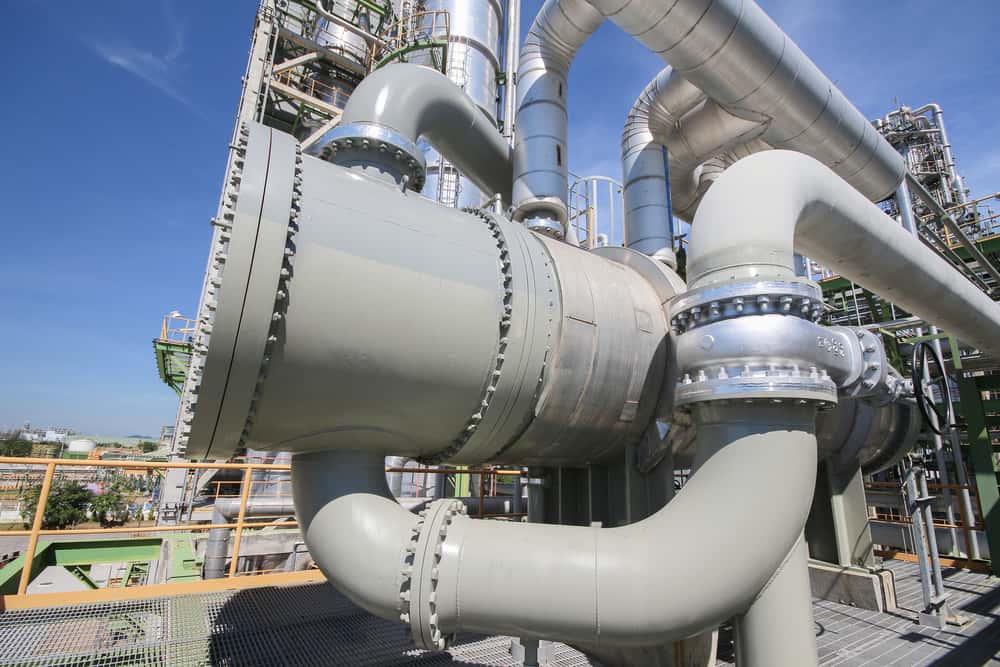
Any assembly industry project must ensure the attached or bonded system can withstand contingencies that could result in detachment or breakdown. Attachment methods such as riveting or the use of threaded fasteners may adequately meet this requirement for some metal-based projects; however, for many projects—including piping and/or tubing applications that carry fluids or gases through pressure vessels—these types of attachments can introduce unacceptable weaknesses into the system.
Pressure vessels are used in industrial facilities, such as industrial plants, biopharmaceutical and semiconductor manufacturing factories, and energy generation plants where welding is required for assemblies. In order to meet the increased strength and durability criteria for carrying transport through pipes or tubes under pressure, the tube welding machine should meet a range of basic requirements. As we turn to develop a list of core requirements for tube welding, you may also want to examine the types of welding used in pressure vessels.
Welding Pressure Vessels
Pressure vessels are critical elements for many commercial and industrial operations. In industry, these vessels may contain chemical reactions, toxic fumes, or other contents under pressure. If released, these contents could be hazardous to employees, nearby populations, and/or the environment. Therefore, pressure vessels must maintain a high standard for strength and durability, and they can be classified as one of the following:
Heat Exchangers
Heat exchangers are common vessels used in many industries. As contents are typically under high or extreme heat, heat resistance is required for welded tubing in these systems. Additionally, the compression of gas or liquid for transport requires that the tubing must often be more pressure resistant than the vessel itself.
Process Vessels
Process vessels are specialized to convert, combine, or extract contents. This equipment is most often used in conjunction with other common pressure vessel types.
Storage Vessels
Storage vessels are the most commonly used types of pressure vessel. While liquid is regularly stored in them, storage vessels can also contain contents that require long-term housing. Due to extended exposure, vessel interior walls may be composed of a different material type than the surface, and this can lower costs.
The movement of contents into, out of, or between vessels may be accomplished using pipe, tube, or tube to tubesheet connections. In order to determine the best tube welding machine, it is imperative that one consider pressure vessel requirements that include the type of connection(s), as well as their strength, durability, and content flow type.
Pressure Vessel Tube Welding Machine Essentials
All welding projects are, to some extent, unique to a client’s demands. The specific tube welding machine falls under your purview, though, and it is necessary for you to determine the best process to use, as well as the machine requirements. Several types of welding are used in pressure vessels, including: SMAW, FCAW, SAW, GMAW, and GTAW. The latter two welding processes are often considered the best options, especially if resistance to high heat or thermal integrity is a priority.
Strength and durability of the weld joints are of high importance since failure for some applications could threaten personnel, local residents, or the environment surrounding the plant. To prevent potentially catastrophic failures from occurring, the equipment must be able to process high-quality, reliable welds and have the following attributes:
TUBE WELDING MACHINE REQUIREMENTS |
| Attribute | Why it’s Important |
| Process stability | Product integrity is often required for tube welding. This means that a consistent, high quality weld must be created from start to end. Otherwise, the weld strength and durability may be adversely affected and failure could be possible. |
| Good heat input control | As the weld formation progresses, the heat input needs to change due to the position force of the weld head. Without heat input control that compensates for gravity, maintaining the proper heat input is difficult. |
| Weld fixed position tubes | For fixed position tube welding, control adjustments must be performed as the weld is made around the tube. Failing to adjust properly will affect the weld quality and strength. |
| Automation | The skill set required of the welder is high for this type of project. The use of automation will remove much of the responsibility of precise alignment and operation from the welder to create a more reliable process. |
| Ease of control | Due to the skill and precision required, it is highly recommended that the welding machine be as easy to operate as possible. This is especially important for those new to the equipment. |
Welding pressure vessel tubing can be very difficult. Therefore, when looking for a tube welding machine, you’ll want to ensure that it has the attributes listed in the table above. An automated orbital GTAW welding machine meets these requirements and is a preferred method to weld pressure vessels, as well as the tube connections.
Arc Machines, Inc. provides high-quality automated orbital GTAW welders and access to staff who know how to develop welding parameters for pressure vessels of all kinds. For inquiries regarding products, contact sales@arcmachines.com. For service inquiries, contact service@arcmachines.com. Arc Machines welcomes the opportunity to discuss your specific needs. Contact us to arrange a meeting.




